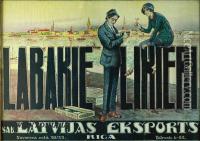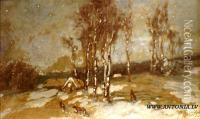Aleksander Petrovich Apsitis Paintings
Aleksander Petrovich Apsitis was a Latvian artist known for his contributions to the graphic arts, particularly in the realm of book design and illustration. Born on April 15, 1915, in the city of Riga, which was then part of the Russian Empire and is now the capital of Latvia, Apsitis lived through a tumultuous period in European history that saw the First World War, the Russian Revolution, and the Second World War.
Apsitis's career began in an era when Latvia was experiencing a national awakening, having declared independence from Soviet Russia in 1918, only to be occupied later by the Soviet Union in 1940, then Nazi Germany from 1941 to 1944, and again by the Soviets until the country regained its independence in 1991. His early work was influenced by the Art Nouveau and Symbolist movements, which were popular in Latvia during the interwar period.
Throughout his career, Apsitis worked as a graphic designer, book illustrator, and teacher. His illustrations often graced the pages of classic Latvian literature, where he was known for his ability to capture the essence of the narrative through his detailed and expressive drawings. In addition to book design, he also created ex-libris, which are bookplates designed to indicate the owner of a book, and these works often featured intricate patterns and motifs that reflected Latvian folklore and mythology.
Apsitis's style evolved over the years, reflecting the changing artistic trends and the political and social climate of Latvia. Despite the challenges posed by the various occupations of Latvia, he continued to work and contribute to the cultural life of the country. His dedication to the arts made him a respected figure in the Latvian artistic community.
Aleksander Petrovich Apsitis passed away on January 10, 2003. His legacy lives on in the many books he illustrated, which remain a testament to his skill and his commitment to Latvian culture. His work is an integral part of Latvia's artistic heritage and continues to be celebrated for its beauty, craftsmanship, and cultural significance.



